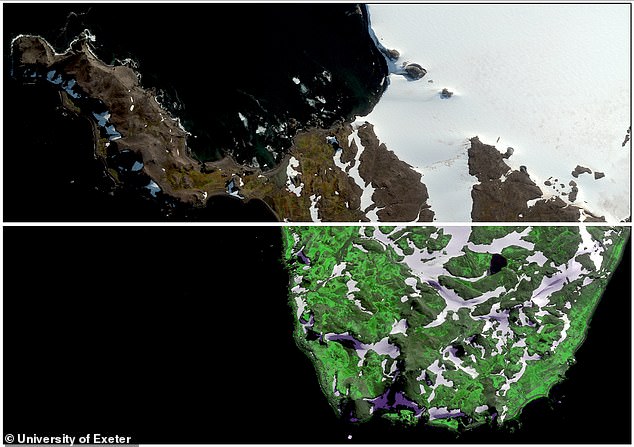If you were asked to visualize Antarctica, a vast white landscape would likely come to mind.
But a worrying new study might make you reconsider that image in your head.
Experts from the universities of Exeter and Hertfordshire have warned that Antarctica is turning green – and climate change is to blame.
Their analysis shows that vegetation cover on the Antarctic Peninsula has increased more than tenfold in the last four decades.
“Our findings raise serious concerns about the environmental future of the Antarctic Peninsula and the continent as a whole,” said Dr. Thomas Roland, who led the study.
If you were asked to visualize Antarctica, a vast white landscape would likely come to mind. But a worrying new study might make you reconsider that image in your head. Pictured: A WorldView-2 satellite image of Robert Island (top) and the same image after analysis, showing areas of vegetated land in bright green (bottom)
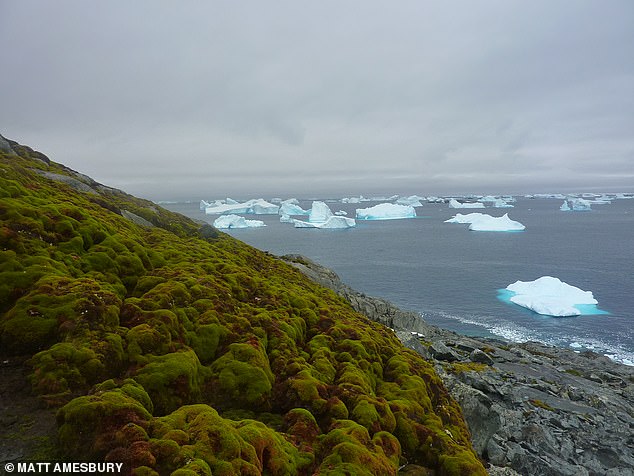
Previous studies have shown that, like many polar regions, the Antarctic Peninsula is warming faster than the global average. In the photo: Green Island
Previous studies have shown that, like many polar regions, the Antarctic Peninsula is warming faster than the global average.
In their new study, the researchers set out to understand how much of the area has “greened” in response to this warming.
The team analyzed satellite images taken throughout the Peninsula over the last 40 years.
Back in 1986, images show that barely a square kilometer of the Peninsula was covered in vegetation.
However, in 2021, this area had increased to almost 12 square kilometers.
Speaking to MailOnline, Dr Roland explained that while simple before and after photos would be “shocking”, they were not possible.
“Unfortunately we only have ‘very high resolution’ images from 2013 and 2016,” he said.
‘While the vegetation increases we see during this brief period are in line with our overall greening trend (1986-2021), the visual difference is not that noticeable!
‘In turn, I suspect that a single image from the lower resolution satellite we used for the main study (where we have hundreds of images over the entire 35-year period) would not be perceived as having a good enough “quality” to have any impact. . .’
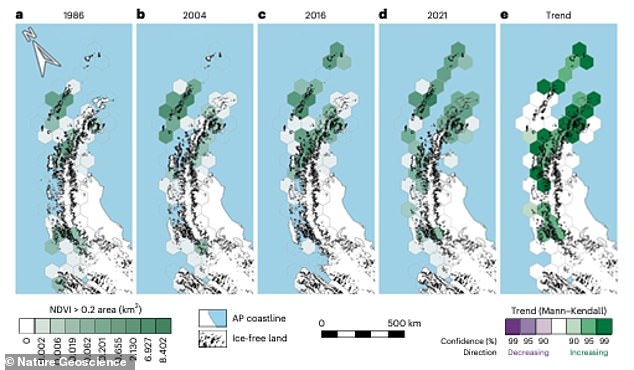
The team analyzed satellite images taken on the Peninsula over the past 40 years and found that vegetation cover has increased significantly
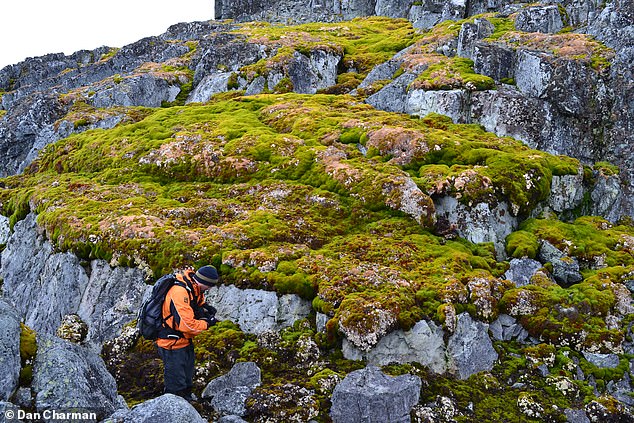
In 1986, only one square kilometer of the Peninsula was covered with vegetation. However, in 2021, this area had increased to almost 12 square kilometers. In the photo: Norsel Point
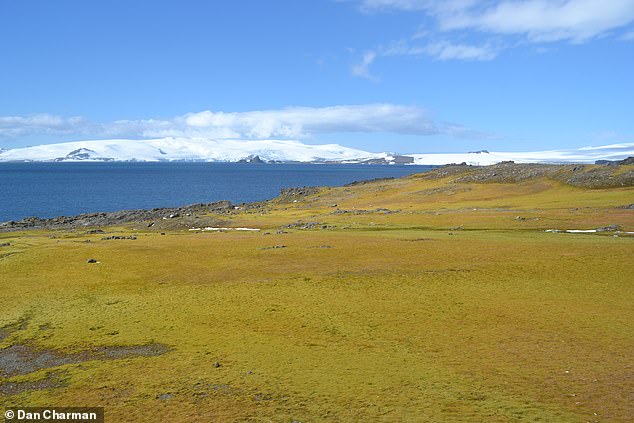
Greening accelerated by more than 30 percent in recent years (2016-2021) relative to the entire study period (1986-2021), expanding by more than 400,000 square meters per year in this period. In the photo: Barrientos Island
The study also found that greening is happening faster and faster.
Greening accelerated by more than 30 percent in recent years (2016-2021) relative to the entire study period (1986-2021), expanding by more than 400,000 square meters per year in this period.
“The plants we find on the Antarctic Peninsula (mainly mosses) grow in perhaps the harshest conditions on Earth,” Dr Roland said.
“The landscape is still almost entirely dominated by snow, ice and rocks, and only a small fraction is colonized by plant life.
“But that small fraction has grown dramatically, showing that even this vast, isolated ‘desert’ is being affected by anthropogenic climate change.”
Worryingly, researchers say that as these ecosystems become more established and temperatures continue to rise, the extent of greening will increase.
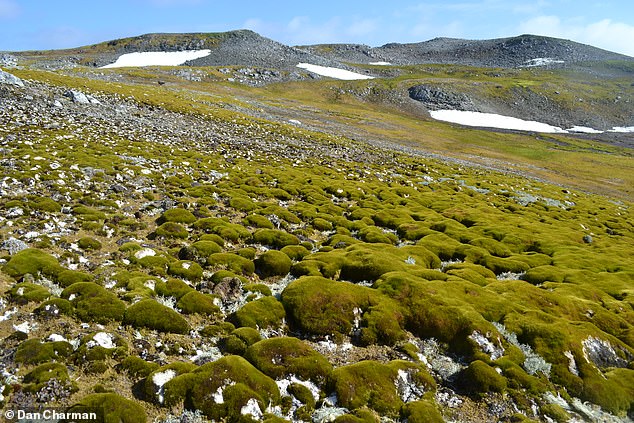
Experts from the universities of Exeter and Hertfordshire have warned that Antarctica is turning green – and climate change is to blame. Pictured: Ardley Island
Dr Olly Bartlett, co-author of the study, said: “Soil in Antarctica is largely poor or non-existent, but this increase in plant life will add organic matter and facilitate soil formation, potentially paving the way for other plants to grow. .
“This increases the risk of non-native and invasive species arriving, possibly transported by ecotourists, scientists or other visitors to the continent.”
Based on the findings, the team calls for “urgent” research into the specific mechanisms behind the green trend.
“The sensitivity of Antarctic Peninsula vegetation to climate change is now clear and, in future anthropogenic warming, we could see fundamental changes to the biology and landscape of this iconic and vulnerable region,” Dr Roland added.
“To protect Antarctica, we must understand these changes and identify precisely what is causing them.”


